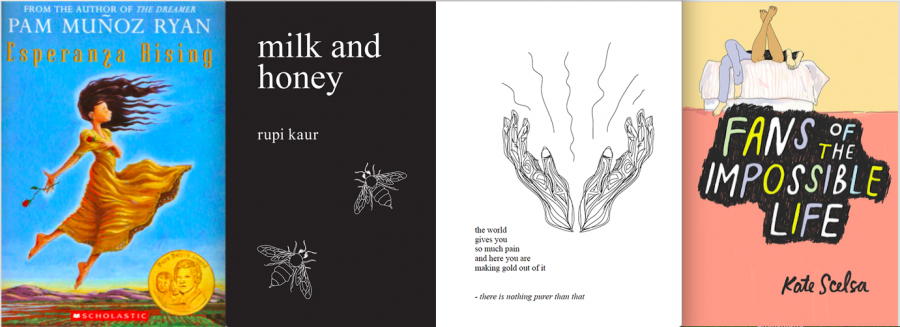In honor of International Women’s Day and Women’s History Month, I’ve compiled a list of books that were written by women and/or feature strong female characters. These are some of my favorites, so enjoy!
milk and honey, Rupi Kaur
“you tell me to quiet down cause
my opinions make me less beautiful
but i was not made with a fire in my belly
so i could be put out
i was not made with a lightness on my tongue
so i could be easy to swallow
i was made heavy
half blade and half silk
difficult to forget and not easy
for the mind to follow”
― Rupi Kaur, milk and honey
“i want to apologize to all the women
i have called pretty
before i’ve called them intelligent or brave
i am sorry i made it sound as though
something as simple as what you’re born with
is all you have to be proud of when your
spirit has crushed mountains
from now on i will say things like
you are resilient or you are extraordinary
not because i don’t think you’re pretty
but because you are so much more than that”
― Rupi Kaur, milk and honey
With poignant poetry alongside hand-drawn illustrations, Rupi Kaur paints an unflinchingly honest depiction of what it means to be a both a woman and a person of color in today’s society. The book is split into four chapters: The Hurting, The Loving, The Breaking and The Healing. Kaur covers a range of topics, from her experiences growing up, to her identity as a Sikh immigrant from India, to what it means to be a woman. Her narrative does touch on some darker topics, but ends with a message of healing and acceptance. This is easily one of my favorite books, and one I would recommend to everyone, regardless of gender, race or cultural background. However, Kaur does write quite a bit about sexual assault and domestic violence, so please take note if you would be affected by that.
Esperanza Rising, Pam Muñoz Ryan
“We are like the phoenix,” said Abuelita. “Rising again, with a new life ahead of us.”
― Pam Muñoz Ryan, Esperanza Rising
Esperanza Rising is the story of a young girl living a privileged life in Mexico during the 1930s. However, Esperanza and her family are forced to flee to the United States after the death of a family member, and quickly assimilate into the life of migrant farmers alongside their former servants. Friendships and communities are formed around them in their new home, but Esperanza must also learn to navigate the unexpected anti-migrant and anti-Mexican sentiments that existed in the U.S. at the time. The novel is based on the story of Pam Muñoz Ryan’s grandmother, who immigrated from Mexico in the 1930s and faced many of the same challenges as Esperanza. It is an inspiring story, but it forces the reader to confront the racism and xenophobia of the time, as well as the mistreatment of Mexican-Americans that laid the groundwork for the Chicano Movement of the 1960s.
Fans of the Impossible Life, Kate Scelsa
“You have been here before. The highway winding north through dark New England forests. White dunes towering above the sides of the road, looking like the moon. You can come back. Even after you hurt each other too deeply to comprehend. Even after the impossible becomes just that. Too far out of reach even to dream. Love remembers the places where it touched down, left an invisible trail on your bodies. Follow it back. You can follow it back to them.”
― Kate Scelsa, Fans of the Impossible Life
Fans of the Impossible Life revolves around three main characters: Mira, Sebby and Jeremy. Mira has recently moved to a new school after a nine-month battle with depression and self-harm. Sebby is a gay foster kid with a homophobic foster parent who met Mira when they were both in the psych ward of the hospital. Jeremy is a shy artist who was relentlessly bullied until he met Mira and Sebby. Kate Scelsa paints a compelling and heartbreaking coming-of-age story through their narratives. One really unique thing about her writing is that she uses first, second and third person to distinguish between Mira, Sebby and Jeremy. This is a beautiful story of love, loss, hope and survival in a seemingly cutthroat teenage world.
Author’s Note
Hello readers! My name is Maya, and I wanted to create this column, “The Feminist’s Bookshelf” for people everywhere who are looking for new ideas, different perspectives, characters who represent them, or just a good book to read. Many of the books and articles I recommend will talk about gender equality, but it’s hard to advocate for equality between genders without also advocating for equality between races, sexual orientations, cultures and religions. Therefore, most — if not all — of what I recommend will have those themes as well. I will do my best to represent a range of topics, but if you have a book you would like to see reviewed, please contact us at [email protected].
Happy reading!
Maya
